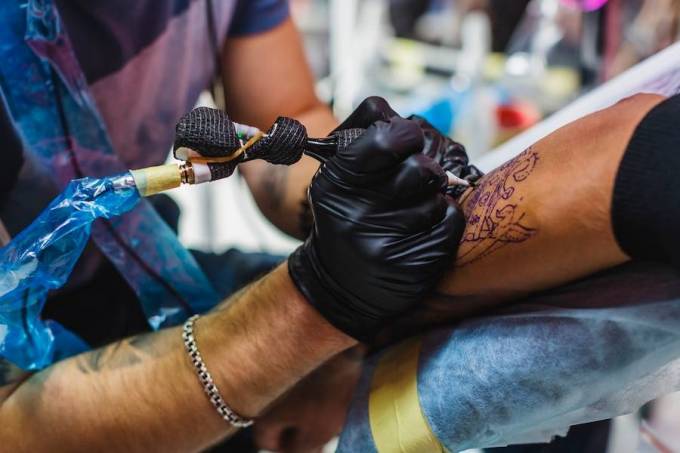Laser Tattoo Removal: The Latest Techniques
Published By Bisma Jamal, 7 Sep 2024

Laser Tattoo Removal in Dubai has seen significant advancements in recent years, leading to more effective and less invasive treatments. The latest techniques harness cutting-edge technology to improve outcomes, reduce discomfort, and minimize risks. Here’s an overview of the most recent advancements in laser tattoo removal techniques.
1. Picosecond Lasers
Picosecond lasers are one of the most significant advancements in laser tattoo removal. Unlike traditional Q-switched lasers, which operate in nanoseconds, picosecond lasers emit light pulses in picoseconds (trillionths of a second). This ultra-short pulse duration allows for:
-
More Efficient Ink Fragmentation: The rapid pulses break down ink particles into even smaller fragments compared to older technologies. This can lead to faster and more complete removal of tattoos.
-
Reduced Treatment Sessions: Because picosecond lasers can more effectively fragment ink, fewer sessions may be needed to achieve desired results.
-
Less Thermal Damage: The short pulse duration minimizes the risk of heat damage to surrounding skin, making the procedure safer and more comfortable.
2. Q-Switched Lasers with Enhanced Wavelengths
Recent advancements in Q-switched laser technology involve the use of lasers with improved or additional wavelengths. These enhancements provide several benefits:
-
Broader Range of Ink Colors: Newer Q-switched lasers can target a wider spectrum of ink colors. For instance, the Nd
laser is effective for darker colors like black and blue, while the Alexandrite laser is used for green and yellow inks. -
Improved Precision: Enhanced wavelengths offer more precise targeting of ink particles, reducing the risk of damage to surrounding tissue and improving overall treatment efficacy.
3. Fractional Laser Technology
Fractional lasers, though less common for tattoo removal, have been refined for more targeted treatments:
-
Fractional Energy Delivery: Fractional lasers deliver energy in a grid-like pattern, targeting only a fraction of the skin at a time. This can be useful for treating specific areas or residual ink after initial removal sessions.
-
Combination Therapies: Fractional lasers are sometimes used in combination with Q-switched or picosecond lasers to address various aspects of tattoo removal, such as residual pigmentation or texture changes.
4. Laser-Induced Optical Breakdown (LIOB)
Laser-Induced Optical Breakdown (LIOB) is an emerging technique that utilizes high-intensity laser pulses to create a plasma state within the tattoo ink. This method offers:
-
Enhanced Ink Fragmentation: LIOB can break down ink particles into even smaller fragments compared to traditional laser techniques, improving the efficiency of ink removal.
-
Less Discomfort: The technique may reduce discomfort and minimize thermal damage, as the energy is focused on the ink rather than surrounding tissue.
5. Cooling Technologies
Advancements in cooling technologies have significantly improved the comfort and safety of laser tattoo removal:
-
Cryogen Spray: Cryogen spray cools the skin before and after the laser pulse, reducing discomfort and minimizing the risk of burns.
-
Contact Cooling: Some lasers incorporate contact cooling devices that apply a cooling effect directly to the skin during treatment, helping to alleviate pain and protect the epidermis.
6. Combination Therapies
Combining different laser technologies or integrating laser treatment with other modalities can enhance overall results:
-
Combination with Topical Treatments: Combining laser removal with topical treatments, such as creams or ointments, can help in managing post-treatment care and improving skin healing.
-
Integration with Other Aesthetic Procedures: Laser tattoo removal may be combined with other procedures, such as microdermabrasion or chemical peels, to address specific skin concerns and improve overall skin appearance.
7. Customized Treatment Plans
Modern laser tattoo removal approaches emphasize the importance of personalized treatment plans:
-
Tailored Laser Settings: Advanced lasers allow for precise adjustment of settings based on individual tattoo characteristics, skin type, and response to previous treatments.
-
Individualized Protocols: Specialists now develop customized protocols that account for factors such as ink color, depth, and skin type, leading to more effective and safer treatment outcomes.
8. Advancements in Aftercare
The latest techniques also focus on improving aftercare:
-
Enhanced Healing Products: New formulations of healing creams and ointments support faster recovery and better skin regeneration.
-
Improved Post-Treatment Protocols: Updated aftercare protocols aim to minimize complications, manage side effects, and promote optimal healing.
Conclusion
Laser tattoo removal continues to evolve with advancements in technology and techniques. Picosecond lasers, enhanced Q-switched lasers, fractional technology, and innovative cooling methods are leading the way in making tattoo removal more efficient, comfortable, and effective. By staying informed about the latest developments, individuals seeking tattoo removal can benefit from improved results and a more tailored treatment experience. Consulting with a skilled specialist who uses the latest techniques will help ensure the best possible outcome for your tattoo removal journey.
